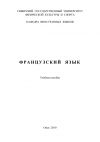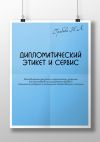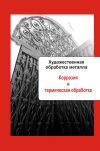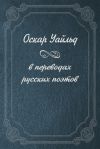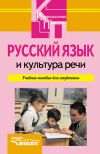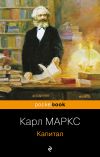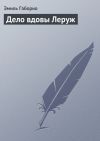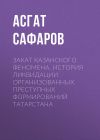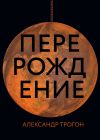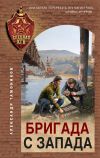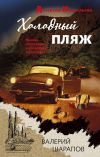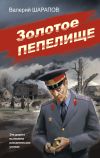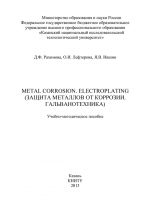
Автор книги: Я. Ившин
Жанр: Педагогика, Наука и Образование
сообщить о неприемлемом содержимом
Текущая страница: 1 (всего у книги 9 страниц) [доступный отрывок для чтения: 2 страниц]
Я. Ившин, О. Лефтерова, Д. Рахимова
Metal Corrosion. Electroplating (Защита от металлов от коррозии. Гальванотехника)
Введение
Материалы пособия содержат общую информацию о коррозии металлов, ее типах и формах, включают аутентичные тексты, направленные на изучение способов и методов защиты металлов от коррозии, таких как гальваностегия, цинкование, никелирование, анодирование алюминием, хромирование, омеднение.
Данное пособие позволяет рассмотреть электрохимические процессы нанесения металлических, неметаллических и композиционных покрытий, методы исследования их структуры и функциональных свойств, сочетание электрохимических процессов с физическими методами обработки поверхности материалов.
Пособие состоит из 15 разделов, каждый из которых содержит комплекс из 17 заданий по работе с терминологией, устному и письменному переводу, устному изложению содержания текстов на русском и английском языках. Тексты способствуют формированию навыков использования научной и специальной терминологии в процессе письменного и устного общения в профессиональной сфере. Послетекстовые упражнения направлены на понимание прочитанного, развитие навыков устной речи и аннотирования.
Данное учебное пособие предназначено для студентов, магистрантов и аспирантов направления 250300 «Технология электрохимических производств» по специализации «Функциональная гальванотехника» и «Коррозия и защита металлов».
Unit 1
WHAT IS CORROSION?
1 . Read the international words, guess their meanings and give the Russian equivalents.
Corrosion, phenomenon, electrode, electrolyte, filtrate, laboratory, result, structure, radiator, acid, contribution, molecule, element, degradation, component.
2 . Read and translate the following verbs.
To contribute, to corrode, to protect, to destroy, to apply, to use, to affect, to observe, to establish, to make, to generate, to concentrate, to develop, to refer to, to replace, to perforate.
3 . Match the English phrases from column A with the Russian phrases in column B.

4 . Read and translate the text. Summarize it in Russian.
Corrosion is the deterioration of materials by chemical interaction with their environment. The term corrosion is sometimes also applied to the degradation of plastics, concrete and wood, but generally refers to metals. The most widely used metal is iron (usually as steel) which usually corrodes.
The word corrosion is as old as the earth but it has been known by different names. Corrosion is known commonly as rust, an undesirable phenomena which destroys the luster and beauty of objects and shortens their life. A Roman philosopher, Pliny (AD 23-79) wrote about the destruction of iron in his essay “Ferrum Corrumpitar”. Corrosion since ancient times has affected not only the quality of daily lives of people, but also their technical progress.
Philosophers, writers and scientists observed corrosion and mentioned it in their writings: Pliny the elder, Herodotus, Lomonosov, Austin, Thenard, Hall, Davy and De la Rive.
The most important contributions were later made by Faraday who established a quantitative relationship between chemical action and electric current. Ideas on corrosion control started to be generated at the beginning of nineteenth century. Whitney provided a scientific basis for corrosion control based on electrochemical observation. As early as in eighteenth century it was observed that iron corrodes rapidly in dilute nitric acid but remains unattacked in concentrated nitric acid. Considerable progress towards the modern understanding of corrosion was made by the contributions of Evans, Uhlig and Fontana. Corrosion laboratories established in M.I.T., USA and University of Cambridge, UK, contributed significantly to the growth and development of corrosion science and technology as a multi disciplinary subject. In recent years, corrosion science and engineering has become an integral part of engineering education globally. (From Trakia Journal of Sciences, vol.3, № 7, 2005).
5 . Read the text again. Decide whether the following statements are true or false.
1. Corrosion is the degradation of materials due to interactions with their environments.
2. A French philosopher, Pliny (AD 23-79) wrote about the iron compounds in his essay “Ferrum Corrumpitar”.
3. Faraday established a qualitative relationship between oxidising action and electric current.
4. Whitney provided a scientific basis for corrosion control based on the cathodic protection.
5. In recent years, corrosion science and engineering has disappeared in engineering education.
6 . Read the text. What is its main idea?
Корро́зия (от лат. corrosio – разъедание) – это самопроизвольное разрушение металлов в результате химического или физико-химического взаимодействия с окружающей средой. В общем случае это разрушение любого материала, будь то металл или керамика, дерево или полимер. Причиной коррозии служит термодинамическая неустойчивость конструкционных материалов к воздействию веществ, находящихся в контактирующей с ними среде.
Коррозия металлов – разрушение металлов вследствие химического или электрохимического взаимодействия их с коррозионной средой. Наиболее часто при коррозии металл окисляется с образованием ионов металла, которые при дальнейших превращениях дают различные продукты коррозии. Коррозия может быть вызвана как химическим, так и электрохимическим процессом. Соответственно различают химическую и электрохимическую коррозию металлов. (From forexaw.com).
7. Work in pairs. Translate the following text from English into Russian.
The major harmful effects of corrosion can be summarized as follows:
1. Reduction of metal thickness leading to loss of mechanical strength and structural failure or breakdown.
2. Hazards or injuries to people arising from structural failure or breakdown (e.g. bridges, cars, aircraft).
3. Loss of time in availability of profile-making industrial equipment.
4. Reduced value of goods due to deterioration of appearance.
5. Contamination of fluids in vessels and pipes.
6. Perforation of vessels and pipes allowing escape of their contents and possible harm to the surroundings. For example a leaky domestic radiator can cause expensive damage to carpets and decorations, while corrosive sea water may enter the boilers of a power station if the condenser tubes perforate.
7. Loss of technically important surface properties of a metallic component. These could include frictional and bearing properties, ease of fluid flow over a pipe surface, electrical conductivity of contacts, surface reflectivity or heat transfer across a surface.
8. Mechanical damage to valves, pumps, etc, or blockage of pipes by solid corrosion products.
8 . Work in pairs. Interpret the following passage sentence by sentence.
Corrosion is a natural and costly process of destruction like earthquakes, tornados, floods and volcanic eruptions, with one major difference. Сorrosion can be prevented or at least controlled. Several definitions of corrosion are reproduced below:
(A) Corrosion is the surface wastage that occurs when metals are exposed to reactive environments.
(B) Corrosion is the result of interaction between a metal and environments which results in its gradual destruction.
(C) Corrosion is an aspect of the decay of materials by chemical or biological agents.
(D) Corrosion is an extractive metallurgy in reverse.
(E) Corrosion is the deterioration of materials as a result of reaction with its environment (Fontana).
(F) Corrosion is the destructive attack of a metal by chemical or electrochemical reaction with the environment (Uhlig).
Despite different definitions, it can be observed that corrosion is basically the result of interaction between materials and their environment.
9 . Give English equivalents to the following word combinations and learn them by heart:
химическое взаимодействие
физико-химическое взаимодействие
термодинамическая неустойчивость
разрушение металлов
металл окисляется
электрохимический процесс
коррозийная среда
причины коррозии
10 . Give Russian equivalents to the following word combinations and learn them by heart:
reduction of metal thickness
loss of mechanical strength
structural failure
perforation of vessels and pipes
profile-making industrial equipment
electrical conductivity
blockage of pipes
solid corrosion products
11 . Translate the following sentences into Russian.
1. Millions of dollars are lost each year due to the corrosion of iron and steel.
2. The problem with iron as well as many other metals is that the oxide formed by oxidation does not firmly adhere to the surface of the metal and flakes off easily causing "pitting".
3. Extensive pitting eventually causes structural weakness and disintegration of the metal.
4. Corrosion occurs in the presence of moisture.
5. The formation of rust can occur at some distance away from the actual pitting or erosion of iron.
6. The involvement of water accounts for the fact that rusting occurs much more rapidly in moist conditions as compared to a dry environment such as a desert.
7. The presence of salt greatly enhances the rusting of metals.
8. Iron or steel tend to corrode much more quickly when exposed to salt or moist salty air near the ocean.
9. The dissolved salt increases the conductivity of the aqueous solution formed at the surface of the metal and enhances the rate of electrochemical corrosion.
12 . Translate the following sentences into English.
1. Среда, в которой металл подвергается коррозии (коррозирует), называется коррозионной или агрессивной средой.
2. Причиной возникновения и протекания процессов коррозии является термодинамическая неустойчивость материалов к определенным компонентам, находящимся в окружающей их среде.
3. Ежегодно коррозия наносит огромнейший ущерб народному хозяйству каждой страны.
4. Результатом коррозии являются продукты коррозии (например, ржавчина), вышедшее из строя оборудование, разрушение конструкций.
5. Большинство металлов (кроме золота, серебра, платины, меди) встречаются в природе в ионном состоянии: оксиды, сульфиды, карбонаты – называются обычно рудами.
6. Защита от коррозии является одной из важнейших проблем, имеющей большое значение для народного хозяйства.
7. Основной ущерб от коррозии металла связан не только с потерей больших количеств металла, но и с порчей или выходом из строя самих металлических конструкций.
8. Вследствие коррозии металлы теряют необходимую прочность, пластичность, герметичность, тепло– и электропроводность и другие необходимые качества.
9. Коррозии подвергаются не только металлы, но и любые материалы, например бетон, пластмасса, резина или керамика.
13 . Translate the following word combinations.
Разрушение металлов – electrical current – термодинамическая неустойчивость – conductivity – коррозийная среда – rust – электрохимическая коррозия – gradual destruction – руда – mechanical damage – ионное состояние – condenser tubes – металлическая конструкция.
14 . Give the definitions of the words and word combinations.
1. Resistance is…
2. Ductility is…
3. Hermiticity is …
4. Heat-conducting is …
5. Electroconductivity is …
15 . Give the example(s) of the chemical interaction.
16 . Answer the following questions using texts from Unit 1.
1. What does corrosion mean?
2. What are the consequences of corrosion?
3. What types of corrosion do you know?
4. What conditions does rusting occur in?
17 . Summarize the general ideas developed in all the texts of the Unit 1.
Unit 2
TYPES OF CORROSION
1 . Read the international words, guess their meanings and give the Russian equivalents.
Graphitic, concentration, factor, forms, aluminium, passive, metal, identify, perforate, metallography, proportion, magnesium, temperature, technical managers, module.
2 . Read and translate the following verbs.
To categorize, to damage, to confine, to divide, to re-passivate, to protect, to oxidize, to combine, to release, to contain, to reduce, to support, to react, to encounter.
3 . Match the English phrases from column A with the Russian phrases in column B.

4 . Read and translate the text. Summarize it in Russian.
Corrosion can be categorized in some common types: uniform corrosion, pitting corrosion, galvanic corrosion, crevice corrosion, concentration cell corrosion, graphitic corrosion.
What is pitting corrosion? Pitting Corrosion is the localized corrosion of a metal surface confined to a point or small area that takes the form of cavities. Pitting corrosion is one of the most damaging forms of corrosion. Pitting factor is the ratio of the depth of the deepest pit resulting from corrosion divided by the average penetration as calculated from weight loss.
Pitting corrosion is usually found on passive metals and alloys such aluminium alloys, stainless steels and stainless alloys when the ultra-thin passive film (oxide film) is chemically or mechanically damaged and does not immediately repassivate. The resulting pits can become wide and shallow or narrow and deep which can rapidly perforate the wall thickness of a metal. The shape of pitting corrosion can only be identified through metallography. (From www.engineeringtoolbox.com).
5 . Read the text again. Decide whether the following statements are true or false.
1. Corrosion can be divided into four types.
2. Pitting corrosion refers to corrosion occurring in confined spaces to which the access of the working fluid from the environment is limited.
3. Pitting corrosion is the least damaging form of corrosion.
6 . Translate the following text. What is its main idea?
Crevice corrosion is an intense local attack within crevices or shielded areas on metal surfaces exposed to corrosive solutions. It is characteristically encountered with metals and alloys which rely on a surface oxide film for corrosion protection, e.g., stainless steels, titanium, aluminum, etc. The crevices can be inherent in the design of the equipment (e.g., plate heat exchangers) or inadvertently created by a bad design. Crevice corrosion can be initiated at metal to nonmetallic sealing faces. Any non-metallic material which is porous and used as a gasket, for example, is particularly good (or bad!) for initiating this form of attack. Fibrous materials which have a strong wicking action are notorious in their ability to initiate crevice attack. Similarly, materials which have poor stress relaxation characteristics, i.e., have little or no ability to recover their original shape after being deformed, are also crevice creators – as are materials which tend to creep under the influence of applied loads and/or at elevated temperatures. On the other hand, elastomeric materials are particularly good insofar as they exhibit elastic recovery and have the ability to form a crevice-free seal. However, at elevated temperatures, rubbers may harden. In this condition, they suffer the deficiencies of nonelastomeric gasketing materials.
Artificial crevices can also be created by the deposition of scale from one of the process streams to which the metal is exposed. It is necessary, therefore, to maintain food processing equipment in a scale-free condition – especially on surfaces exposed to service fluids such as hot/cold water, cooling brines, etc. – which tend to be overlooked during plant cleaning operations.
7 . Read the text. What is its main idea?
Металлы и сплавы могут разрушаться под действием химического (химическая коррозия), электрохимического (электрохимическая коррозия) и механического (эрозия) воздействий внешней среды.
Способность металла сопротивляться коррозионному воздействию среды называют коррозионной стойкостью.
Коррозия металла или сплава происходит, как правило, на границе раздела фаз, т. е. на границе соприкосновения твердого вещества с газом или жидкостью.
Коррозионные процессы подразделяются на следующие виды: по механизму взаимодействия металла со средой; по виду коррозионной среды; по виду коррозионных разрушений поверхности; по объему разрушенного металла; по характеру дополнительных воздействий, которым подвергается металл одновременно с действием коррозионной среды.
По механизму взаимодействия металла со средой различают химическую и электрохимическую коррозию.
Коррозию, протекающую под влиянием жизнедеятельности микроорганизмов, относят к биологической коррозии, а протекающую под действием радиоактивного излучения – к радиационной коррозии.
По виду коррозионной среды, участвующей в коррозионном разрушении металла или сплава, различают коррозию в жидкостях неэлектролитах, коррозию в растворах и расплавах электролитов, газовую, атмосферную, подземную (почвенную) коррозию, коррозию блуждающим током и др. (From bibliotekar.ru/spravochnik-33).
8 . Work in pairs. Interpret the following passage sentence by sentence.
Much research has been done on the geometry of crevices and the influence on the propensity for the initiation of crevice corrosion. However, in practical terms, crevice corrosion usually occurs in openings a few tenths of a millimeter or less, and rarely is encountered where the crevice is greater than 2 mm.
Until the 1950s, crevice corrosion was thought to be due to differences in metal ion or oxygen concentration within the crevice and its surroundings. While these are factors in the initiation and propagation of crevice corrosion, they are not the primary cause.
Current theory supports the view that through a series of electrochemical reactions and the geometrically restricted access into the crevice migration of cations – chloride ions in particular – occurs. This alters the environment within, with a large reduction on pH and an increase in the cations by a factor as much as ten. The pH value can fall from a value of seven in the surrounding solution to as low as two within the crevice. As corrosion is initiated, it proceeds in an autocatalytic manner with all the damage and metal dissolution occurring within the crevice. Corrosion results in significant loss of metal under the surface of site of initiation. As a result, deep and severe cutting of the metal occurs.
9 . Give English equivalents to the following word combinations and learn them by heart:
сопротивляться коррозионному воздействию среды
металлы и сплавы
коррозионное разрушение поверхности
объем разрушенного металла
расплавы электролитов
действие радиоактивного излучения
жизнедеятельность микроорганизмов
радиационная коррозия
10 . Give Russian equivalents to the following word combinations and learn them by heart:
chloride ions
oxygen concentration
electrochemical reactions
wall thickness of a metal
wet corrosion
corrosion resistance
nonelectrolyte
ground corrosion
11 . Translate the following sentences into Russian.
1. Uniform corrosion is considered the form of corrosion that can be tolerated in marine structures and equipment.
2. Crevice corrosion occurs at places with gaskets, bolts and lap joints where crevice exists.
3. Pitting corrosion can be prevented through proper selection of materials with known resistance to the service environment.
4. The reaction starts at the surface and proceeds uniformly.
5. The gap or crevice can be formed between two metals or a metal and non-metallic material.
6. The most severe attack occurs at the joint between the two dissimilar metals.
7. Copper produces a green film of corrosion product containing hydrated sulphate, or carbonate, or chloride.
8. Pipelines or tanks that are exposed to an electrolyte with a low oxygen concentration are generally anodic to the same material exposed to an electrolyte with a high oxygen content.
9. Localized corrosion can be defined as selective removal of metal by corrosion at small special areas or zones on a metal surface in contact with a liquid environment.
10. The process of corrosion requires four elements: an anode, a cathode, an electrolyte, and a metallic path.
12 . Translate the following sentences into English.
1. Коррозия металлических сооружений наносит большой материальный и экономический ущерб.
2. Коррозия металлов бывает сплошной и местной.
3. Человечество несет огромные материальные потери в результате коррозии трубопроводов, деталей машин, судов, мостов, морских конструкций и технологического оборудования.
4. Наибольшую чувствительность к щелевой коррозии проявляют пассивные металлы в случае возможной их депассивации в щелях.
5. Наиболее распространенным и практически важным видом химической коррозии является газовая коррозия – коррозия металлов в сухих газах (воздух, продукты сгорания топлива) при высоких температурах.
6. Процессы окисления металла и восстановления окислительного компонента протекают раздельно в среде жидкого электролита.
7. Язвенная коррозия часто наблюдается у нержавеющих стальных сплавов.
8. Если водород не выделяется, происходит восстановление кислорода, и здесь говорят о кислородной коррозии, или коррозии с кислородной деполяризацией.
9. Коррозионное сопротивление нержавеющей стали зависит от тонкого невидимого пассивного слоя на стальной поверхности.
10. Этот слой состоит главным образом из хромированной окиси, которая формируется в реакции с кислородом содержащимся в воздухе.
13 . Translate the following word combinations.
Uniform corrosion – гальваническая коррозия – crevice corrosion – концентрационная коррозия – graphitic corrosion – подземная коррозия – electrolyte – окисление – corrosion resistance – медь – metal surface – коррозийное воздействие – oxygen concentration – распространение – gasket – процессы окисления – oxidizing component – сухой газ.
14 . Give the definitions of the words and word combinations.
1. Depolarization is …
2. Passive metals are …
3. Metallography is …
4. Liquid is …
5. Temperature is …
15 . Give the example(s) of the uniform corrosion.
16 . Answer the following questions using texts from Unit 2.
1. What types of corrosion do you know?
2. Give a definition of ground corrosion.
3. What is corrosion resistance?
4. How can artificial crevices be created?
17 . Summarize the general ideas developed in all the texts of the Unit 2.
Правообладателям!
Данное произведение размещено по согласованию с ООО "ЛитРес" (20% исходного текста). Если размещение книги нарушает чьи-либо права, то сообщите об этом.Читателям!
Оплатили, но не знаете что делать дальше?
